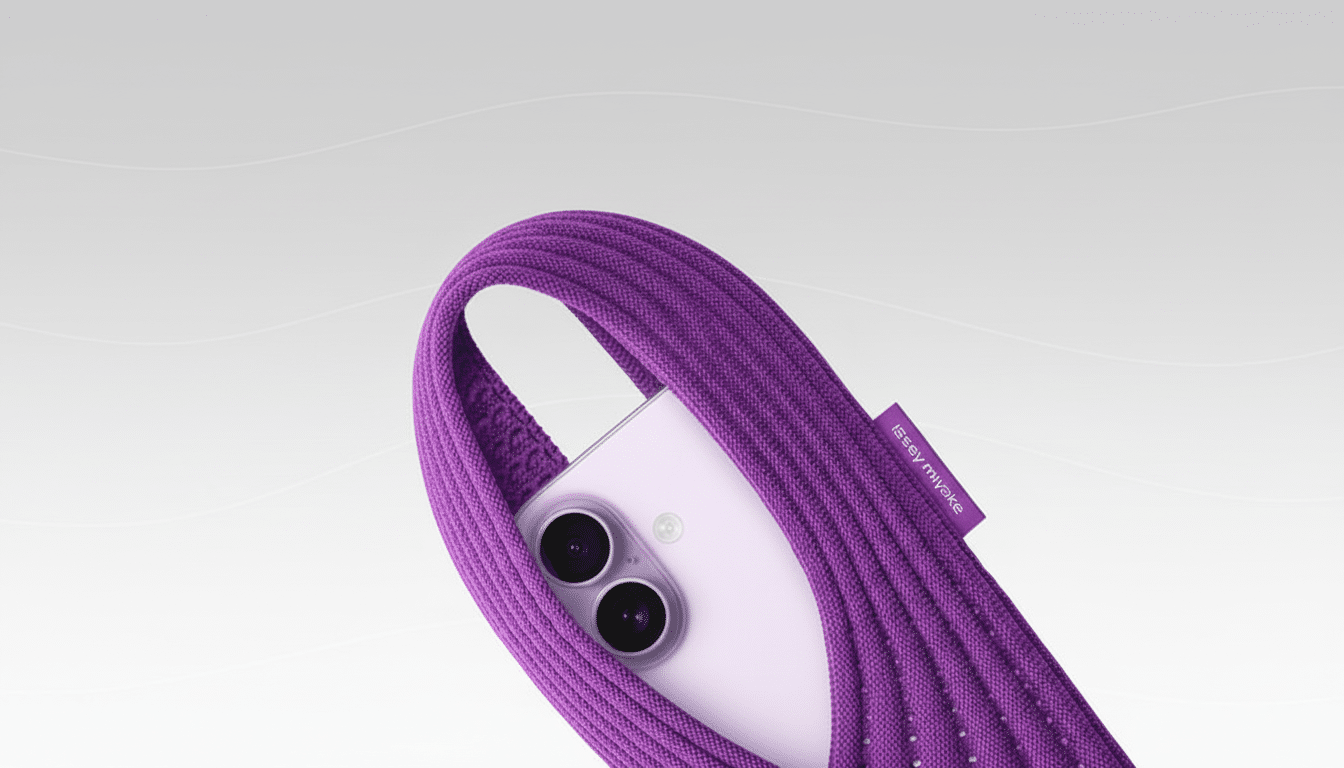Apple has introduced the iPhone Pocket, a stylish sling pouch designed to fit your iPhone, with a couple of small pockets. The big story is the price: as much as $229.95 for what’s basically a high-design phone sock on a strap. It’s a bold swing in favor of wearables as accessories — and a product I really hope Android brands avoid the temptation of copying.
What Apple’s iPhone Pocket actually is and who it suits
First spotted on Cardi B at Paris Fashion Week, the iPhone Pocket was created in partnership with Japanese design house Issey Miyake and is essentially a soft sleeve that people can sport crossbody or attach to a bag. Apple markets it as a minimalist carry for your phone and “everyday items,” playing up the wearable, hands-free trend you can’t escape on city streets or at festivals.

There are two options to choose from: a short-strap pouch costs $149.95, and a long-strap version is available for $229.95. The short-strap model is available in black, cinnamon, lemon, mandarin, peacock, pink, and purple, whereas the long-strap is sold in either black or sapphire. It will be available in select stores throughout the U.S., France, China, Italy, Japan, Singapore, South Korea, Taiwan, and the UK.
A fashion play more than a true utility upgrade
This is more accessory than tech, a fashion statement with Apple’s imprimatur. It’s a familiar model: the company enlists a design partner, raises the materials and presentations to a height — and charges accordingly. We’ve seen that script play out with the Apple Watch Hermès bands, the $19 polishing cloth, and the $699 Mac Pro wheels kit — products that appeal to design-minded buyers as much as spec-chasers.
Functionally, a pouch works. It preserves pockets from being cluttered and keeps phones within reach. But it also adds friction. You’re always in the act of taking your device in and out, and unless that sling has a safe-but-quick-draw opening, you have an additional risk of dropping it. And meanwhile, all those covering cases, lanyards, MagSafe grips, and crossbody straps that also come in at a fraction of this price already exist for today’s modern phones from established bag companies.
If it were about utility, you’d expect some smart touches: built-in cable pass-throughs, or theft-proof zippers, or a splash-resistance rating — perhaps even a slim battery module. Without those features, the iPhone Pocket leans heavily on aesthetics and brand collaboration — great for fashion cachet, less convincing as a pragmatic upgrade.
The business math of accessories behind Apple’s pouch
Accessories are big business. Apple’s Wearables, Home and Accessories business, meanwhile, brought in more than $39 billion in revenue in its most recent fiscal year, the company said in financial filings. Products like the iPhone Pocket are part of that ecosystem: high-margin, brand-fitting, and lower-risk than launching a truly new category of device.

From bags to mounts to wireless chargers, the greater mobile accessories market is enormous and trend-driven — though research firms have reported steady growth in all of those categories. Apple doesn’t need the iPhone Pocket to be a runaway success — it just needs enough fashion-minded customers to justify the collaboration and keep the accessories flywheel turning.
Why Android OEMs should not let their guard down
Android makers have a long tradition of following in Apple’s footsteps, whether that means ditching the headphone jack or charger-in-the-box and adopting notch-derived display cutouts. More recently, others have copied concepts such as magnet accessories and UI notification cues. That follower reflex is natural — not everything Apple does merits an echo, though.
The iPhone Pocket is a design gesture, not a technological step forward. And if Android brands copy it, we’ll be inundated with costly phone socks featuring logos rather than actual innovation. The smarter play is to create accessories that address actual pain points: Qi2 magnetic ecosystems with solid third-party certification, modular slings with quick-access flaps and weatherproofing, or pouches that contain battery packs, tracker pockets, and RFID shielding without ballooning in size.
There’s space for fashion collabs in Android, as Samsung’s Thom Browne editions have proved, but utility should be the dominant factor. A thoughtful $60 crossbody that truly serves a need will garner more goodwill than a $200 logo pouch intended to exist on Instagram.
Bottom line: who the iPhone Pocket is for, and who should pass
The iPhone Pocket will cater to a niche that appreciates design and brand collaborations — and that’s O.K. Rather, for most people it’s an expensive way to copy and augment something budget slings and sleeves already do. Android OEMs need not follow this trend. Let fashion houses sell fashion. Phone manufacturers need to start focusing on smarter, tougher, more functional gear that simplifies everyday carry rather than making it pricier.

